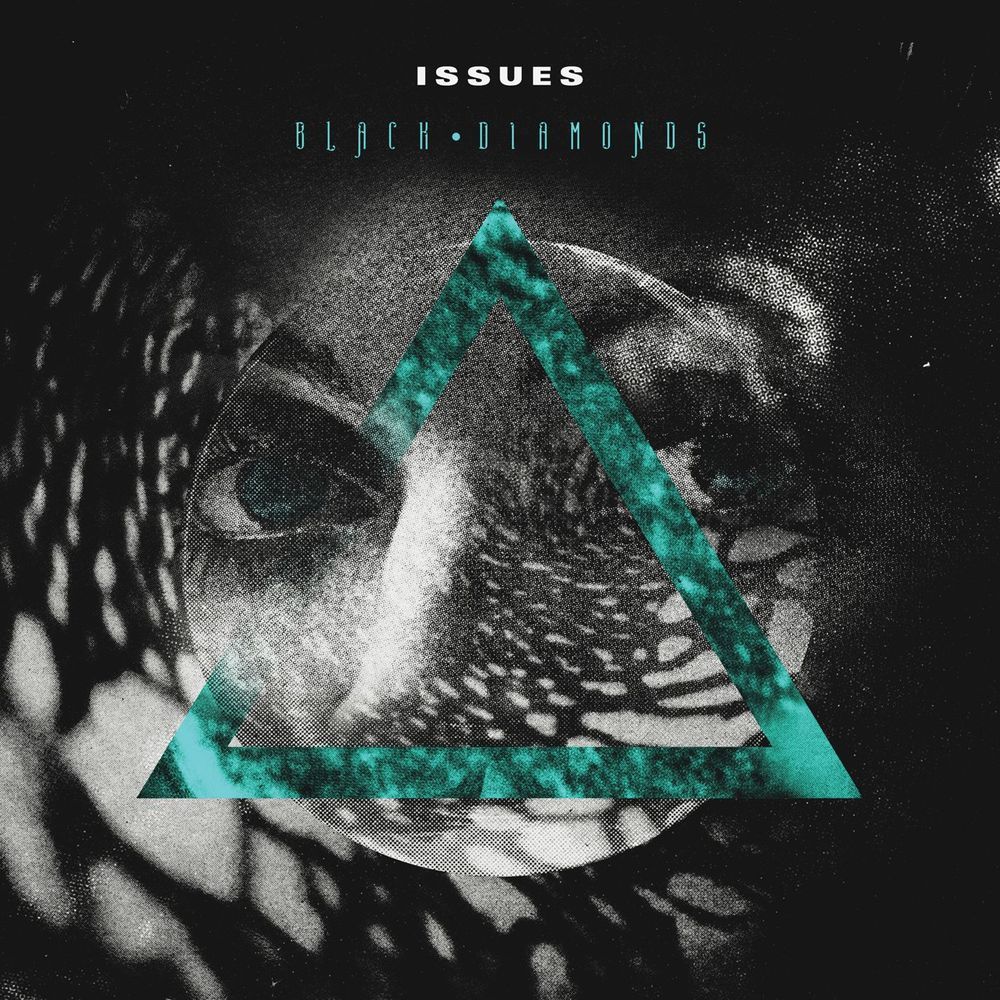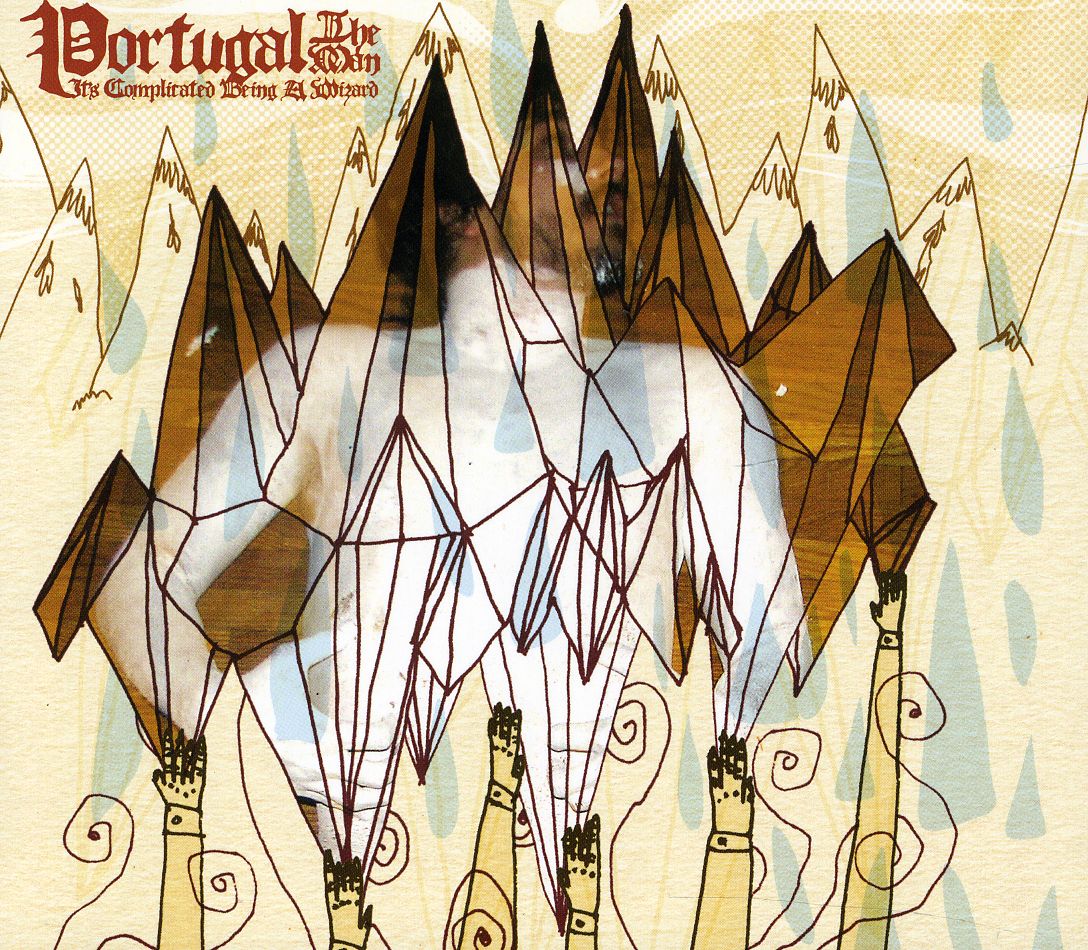Holiday Traditions, Metalcore Nostalgia, and Worshiping Our Own Past
/Now that the holidays are upon us, it’s officially my power season. As much as I am a militant proponent of Having a Summah, Winter is a close second favorite for one reason, and that’s tradition.
Tradition is the all-encompassing, all-important, and infinitely-renewable source of holiday cheer. A celebration of our own past, and the past of our loved ones. It’s the one thing that makes this time of year truly precious and different from any other. Perhaps best of all, “tradition” is entirely unique from person to person; a double helix of reverence for our own history and memories.
Obviously, most people have traditions that they share with loved ones; picking out a Christmas tree, overeating at family dinners, watching specific seasonal movies, etc. Even the most atheistic household in the world probably has something unique that they do around this time of the year, even if it’s just going to the movie theater to avoid crowds. As great as those communal institutions are, I’ve been a staunch believer that the small, self-made traditions are as just as important as the big shared ones.
Tradition as a concept is so important to me that it was one of the first five posts I ever wrote on this site. Since I’ve already got multiple Christmas/year-end posts cooking up (and because I recognize my excitement for the holiday is offputting to some), I’ll instead use this specific write-up to focus on November.
Fueled by nothing but the endorphin rush of nostalgia and slavish devotion to the Christmas spirit, hyper-esoteric rituals begin to leak into nearly every aspect of my life by the time that Halloween is over. I watch specific episodes of TV shows, replay old video games, change the wallpapers on all of my devices, listen to old podcasts, and of course break out the winter music. In fact, one of the primary reasons for my seasonal exuberance is because I’m allowed to revisit music that’s only “acceptable” to listen to during these months.
As much as I love the gigabytes worth of Christmas music in my library, my “Winter music” playlist consists of much more than just on-brand holiday tunes. Over the years I’ve come to fully-embrace being the guy who gets into Christmas as soon as Halloween is over only because it marks the time of year that I get to break these songs out. Like I said, I’m not going to dip into holiday music on here yet. I don’t want to subject you guys to that much Christmas spirit, I’m merely trying to contain myself.
The point is that it would be a disservice to listen to these songs any time besides now, if only because it would make them less special. Obviously “Jingle Bells” would feel weird to listen to in July (and it does sound like a quirky character trait from a Noah Baumbach movie), but there’s just as much, if not more “regular” music that I relegate to the holiday season.
Case in point: the topic of this post. I tend to dip back into my high school-era metalcore around this time of year. Psychoanalyze that all you want, but I’ve now got a fiercely-cultivated playlist culling hundreds of songs from various years of angsty Christmases past. It’s a weird combination, but maybe this music provided me with some counter-programming that combatted both the warm holiday music and cold weather.
You can consider this write-up a bit of a pseudo-sequel to this post from earlier in the year about springtime metalcore. It’s weird because these two seasons are really the only time that I dip back into the genre, but man do I still have a soft spot for it. It’s mainly weird because these songs and albums now fill me with as much joy and holiday happiness as the tonally-inverse Christmas tunes.
At any rate, the same disclaimer on that earlier post applies here: I’m not necessarily proud of any of the music on this list, but it’s a concoction of albums that I find particularly potent. Records that have brought me years worth of happiness, and still have the power to collectively inspire me.
Artifex Pereo - Am I Invisible (2009)
Much like Julien Baker’s 2017 album, Am I Invisible begins with a single, eerie wooden creak. Perhaps belonging to an old floorboard or the frame of a handmade door, this haunted timbered gasp immediately gives the listener a sense of place, as if the entirety of Am I Invisible is settling into your headphones then and there. There’s a brief pause, and then the group’s vocalist Evan Redmon makes his presence known as he belts out the album’s title over a seemingly infinitely-layered vocal take. The remainder of the EP is a 25-minute sample platter that combines the best moments of Kurt Travis and Tilian Pearson-eras of Dance Gavin Dance. The album’s closing track “Neighbors” showcases the band’s already-sharp ear for songwriting, melody, and awe-inspiring emotionally-impactful build-ups. While the group only put out one more release with this early line-up, they still managed to capture something incredibly special on this early EP.
Bring Me The Horizon - Suicide Season (2008)
Back in high school, Bring Me The Horizon’s debut album, Count Your Blessings was the hardest thing I’d ever heard in my life. Filled with bangers like “Braille (For Stevie Wonder’s Eyes Only)” and “(I Used To Make Out With) Medusa” multiple tracks from this album would go on to become genre-defining anthems for this era of the hardcore scene. As you could imagine, the record was an absolute revelation in 2007 and served as the first real brush with deathcore that I’d found palatable at the time. When stacked against the genre-wide impact of their debut, most fans went into the band’s sophomore album with near-impossible expectations.
Softening every aspect from vocals to instrumentation, Suicide Season represents the band’s fully-fledged pivot into a more accessible metalcore sound. While it initially fell flat for me, something kept calling me back to Suicide Season, and in 2017 it’s now my favorite album of the entire genre. Filled with immaculately-produced songs of bile and aggression, tracks like “Diamonds Aren’t Forever” have come to represent the absolute best that this scene has to offer. While the band has continued on a path toward an increasingly-accessible sound, Suicide Season is an achievement that remains an untouched peak of 2000’s metalcore.
A Bullet for Pretty Boy - Revision:Revise (2010)
Hailing from East Texas, A Bullet for Pretty Boy’s debut album is a near-perfect Woe, Is Me doppelganger. Featuring punchy driving instrumentation, tight glitchy drumming, and absolutely crushing breakdowns, every track on Revision:Revise is a pointed showcase of each band member. Guitarist Derrick Sechrist belts out catchy clean choruses, alternating vocal duties with Danon Saylor whose throat-shredding screams impress their weight upon the listener’s consciousness.
While each track is thoughtfully put-together, the album’s definitive performance comes in its final six minutes on “I Will Destroy the Wisdom of the Wise.” The track, which initially made its debut on the band’s 2008 demo, finds new life here thanks to two years of instrumental honing, and a newly-added Tyler Carter feature. It’s quite hard to oversell exactly how much I love this track, but up until last year the song had the unique distinction of my most-played song of all time, and if 200 listens isn’t a commendation then I don’t know what is.
“I Will Destroy the Wisdom of the Wise” is my single favorite song of the entire metalcore genre, my wonderful discovery, and lone takeaway after years of embedding myself in the scene. Every element of the song is immaculate, a marvel to have been captured and recorded in such a flawless state, forever encased in unchanging code. Every word is considered, the drumming is ferocious, every moment is well-placed, and the Tyler Carter feature is the vocal cherry on top of an already delicious sundae. A triumph of the genre.
Chiodos - Illuminaudio (2010)
Fronted by the inimitable Craig Owens, Chiodos was a trailblazing post-hardcore band whose 2005 sophomore album All’s Well That Ends Well served as an entry point to the post-hardcore genre for millions of listeners. In late 2009 Chiodos announced their intention to carry forward as a band without Owens, publicly ousting one of the genre’s most seminal figureheads. Skeptical, cautious, and apprehensive, most fans went into the band’s following album with their guard up; how could the next guy possibly stack up? Like many other fans, I assumed I’d be over the band given the major pivot the comes with the changing of vocalists. In late October of 2010, a friend gave me an impassioned plea to give Illuminaudio a listen, and man am I glad he did. The record is a sprawling, conceptual, and voracious release that aimed high and still managed to surpass every possible expectation.
Much like his predecessor, Brandon Bolmer finds himself handling both clean and screamed vocals throughout the project, managing to reach both high-pitched Owens-esque croons and deep, soul-puncturing screams. The guitar and bass both sound full and rich, providing the perfect counterpoint to Tanner Wayne’s tightly-wound drum patterns. To put it simply, everything is on-point because the band wanted to prove their mettle now that the main star had left. Not only did Chiodos succeed, but they also created the best album in the band’s history and another one of my favorites in the metalcore genre. Owens’ eventual return in 2012 turned Illuminaudio into the unwanted black sheep of the Chiodos family, but in a way that makes this record all the more one-of-a-kind. Truly lighting in a bottle.
Crimson Armada - Guardians (2009)
With unrelenting vocals, and brutal machine gun-like instrumentation Crimson Armada’s debut album is a little rough around the edges but worth revisiting. The album’s title track “Guardian” alternates from fierce rapidly-spit screams to deep skull-crushing breakdowns. Similarly, “The Sound, The Flood, The Hour” is an absolutely punishing and ruthless track with a surprising amount of melody and musicality (once you adjust to the band’s vocals).
Dance Gavin Dance - Acceptance Speech (2013)
Far and away the most recent album on this list, Acceptance Speech released in the fall of my third year of college. While I’d largely grown out of the post-hardcore scene by 2013, Dance Gavin Dance remains the one group from the genre that I still listen to regularly. After numerous lineup changes, Acceptance Speech marked the band’s first release of its current incarnation featuring Tides of Man’s Tilian Pearson on vocals.
The album kicks off aggressively with “Jesus H. Macy,” luring long-time fans into a sense of familiarity with Jon Mess’ screamed vocals. The album is home to some of the band’s most experimental tracks like a crushing riff on “Carve,” chopped-up vocals on “Demo Team,” and the remix-ready “The Jiggler.” The album also hosts one of the strongest closers that the band has ever had on an album, making for a nice bookend of screamed Mess vocals.
While I didn’t think much of it at first, Acceptance Speech grew to be my favorite from the band. The entire record has a beautiful feeling uniformity and wholeness to it, making for one of the most pointed albums in the band’s discography. The whole thing has a wonderful haze to it, like it’s been filtered through a cold December night in the city. There are warm glowing lights, and you can practically see the steam rising off the band as they play. It was proof that Dance Gavin Dance wasn’t going to let one member stop them. I’m glad that they’ve continued with this lineup for so many fantastic releases now because this album only represented a new creative peak that the group set for themselves.
A Day To Remember - And Their Name Was Treason (2005)
A Day To Remember made a name for themselves in 2005 by embracing a unique mixture of metalcore leanings and bouncy pop-punk influences. While later albums are far more polished, fleshed-out, and nuanced, there’s something undeniably charming about the group’s debut. Every band member is still so young and green here, it’s endearing and inspiring to hear such a massively-successful and influential band in such a rough state.
Starting off aggressively with “Heartless,” the band eventually winds its way to the light with “You Should Have Killed Me When You Had the Chance” and “1958,” songs that offered glimmers of the group’s later brilliance. Even in this underdeveloped, underproduced, and underwritten state, there’s an undeniable appeal and magic at play on And Their Name Was Treason, and it’s easy to see how the band made a career out of jumping from pop-punk choruses to metalcore breakdowns. The first of many successful outings in an incredibly-fruitful career.
Dead and Divine - What Really Happened at Lover’s Lane (2005)
Much like A Day To Remember’s debut album, Dead and Divine’s 2005 EP captures a band in its charming infancy. While their later full-lengths would go on to favor (and hone) a much more aggressive post-hardcore sound, What Really Happened at Lover’s Lane features a softer, more careful approach to the genre. With crisp cleans and deeply-growled screams, each song explodes into brutal crescendos of original storytelling. The band’s masterful approach to the build-up is best exemplified by the album’s closing track “Goodnight, Quiet City,” an acoustic ballad that suddenly erupts into a fierce wall of grief before finishing in an orchestral swell accompanied by piercing anguished growls.
Emarosa - Emarosa (2010)
Things seemed to be trending upward for Jonny Craig in 2010, he’d rejoined Dance Gavin Dance after a two-album absence and mended fences with Emarosa in order to helm the group’s killer sophomore album. While things came off the rails quickly after its release, Emarosa’s self-titled record took every sound developed from the band’s earlierworks and improved on them markedly.
This is the first time the band congealed into a fully-formed, standalone entity. While many of his other projects see Craig’s vocals taking the lion’s share of the spotlight, on this release the band figured out how to fit his singing into the instrumentation in a way that everything folds together into one presentable package. It’s a record of constant forward momentum, and one of the best uses of Craig’s incredibly-distinct vocals.
Issues - Black Diamonds (2012)
Formed after the spiteful dissolution of the groundbreaking Woe, Is Me, Issues features a nearly-identical lineup of musicians with a few welcome additions. The group’s 23-minute Black Diamonds EP officially announced the members reuniting, addressed the previous group’s turbulence, and outlined their resolution to move forward with positivity.
After addressing the extra-musical drama, the remainder of the EP is simply overflowing with unique ideas, bringing dozens of fresh elements to a genre that had become stale within the space of a few years. By infusing metalcore with electronic elements, R&B, pop, hip-hop, and much more, the group managed to create something far greater than the sum of its parts: something wholly original and different in a scene where such concepts are often rejected and deemed unmarketable.
Featuring poppy cleans by Tyler Carter and deep fight-inducing screams from Michael Bohn, Issues added some much-needed excitement to the metalcore scene, and Issues’ originality helped differentiate them not only from their previous group but also from the rest of the genre. Two years later the band had released their first full-length, and an accompanying EP that reworked 8 of the band’s songs into newly-formed acoustic tracks. These acoustic versions managed to breathe new life into these already-great songs while also serving as further proof of the band’s musical versatility. These releases represented a positive turning point in my view of the genre and definitive evidence that there’s room for growth in this industry and in life.
Secret and Whisper - Teenage Fantasy (2010)
As with any other popular music scene, bands are born, break up, and then disappear forever. Throughout the early 2000’s literally hundreds of post-hardcore groups got together, created a Myspace, released some music, and then vanished as quickly as they’d appeared. Of all the bands from this era that released music and died out, the one that I miss the most is Secret and Whisper. If anything, I suppose we should consider ourselves lucky that they worked together long enough to leave us something as heartbreakingly beautiful as Teenage Fantasy.
Probably the least “hardcore” of all the bands on this list, this would be my one recommendation to anyone reading this list who is not interested in the scene. It’s one of the most out-there and original approaches to the post-hardcore genre, and an entry I hesitated to include with the other entries on this list.
For 44 minutes Teenage Fantasy shines, glimmers, and brims over the top with fresh ideas. Simultaneously otherworldly and down-to-earth, the album is a glossy and emotional journey into the depths of frontman Charles Furney’s psyche. “Youth Cats” opens the album with a snarling guitar riff and a mythical lyric about the ‘lady of miracles’ who commands the river. Straight out of the gates Furney’s voice is volcanic, straining and stretching, brushing his upper register as the bass bounces back and forth beneath it. “Youth Cats” kicks the entire record off with an unrelenting forward momentum that gives the whole album a sense of immediacy and spectacle.
From there literally every. single. track. hits. Throughout the 44-minute running time the vocals soar, the drums hit hard, and the guitar rumbles, all of which swirl together like paint on a well-worn wooden palette, resulting in one singularly flawless record. Even the slower songs like “Upset Seventeen” have a Daniel Johnston-esque charm to them that make them more personable than nearly every other post-hardcore song you’ve ever heard. There are weird electronic diversions like “Pretty Snarl,” and even typically-boring song topics like love and death are addressed in surprisingly eloquent and thoughtful ways. Sometimes the group ventures out even further than expected, addressing topics like animal testing on “Star Blankets” and drawing parallels between serial killers and stardom on “Famous For a Century.” Everything is handled with a surprising level of tact, but also in a way that nothing sticks out as a poor fit. The entire record is unreal, cavernous, and dream-like. It impacts you once and then slowly envelops your body like warm sand. Truly unlike anything I’ve ever heard before or since. A wonderful and underappreciated masterpiece.
We’re Not Friends Anymore - You Are Television (2010)
Clocking in at a blazing 13 minutes, We’re Not Friends Anymore’s second (and final) EP finds a band that is hungry for success. The vocals explode and smolder, and the instrumentation brings a distinct groove and movement, making for surprisingly danceable tracks that spring to life. It is a breakup album, but one that seems as ready to move on as it is willing to dwell in the past. I’ve never heard anything like it, and the EP’s punctuality makes for a breezy listen that will quickly embed itself in your brain and worm its way to your heart.
This is only an abridged list of my favorites, you can listen to these albums and many others through this Spotify Playlist.






































































